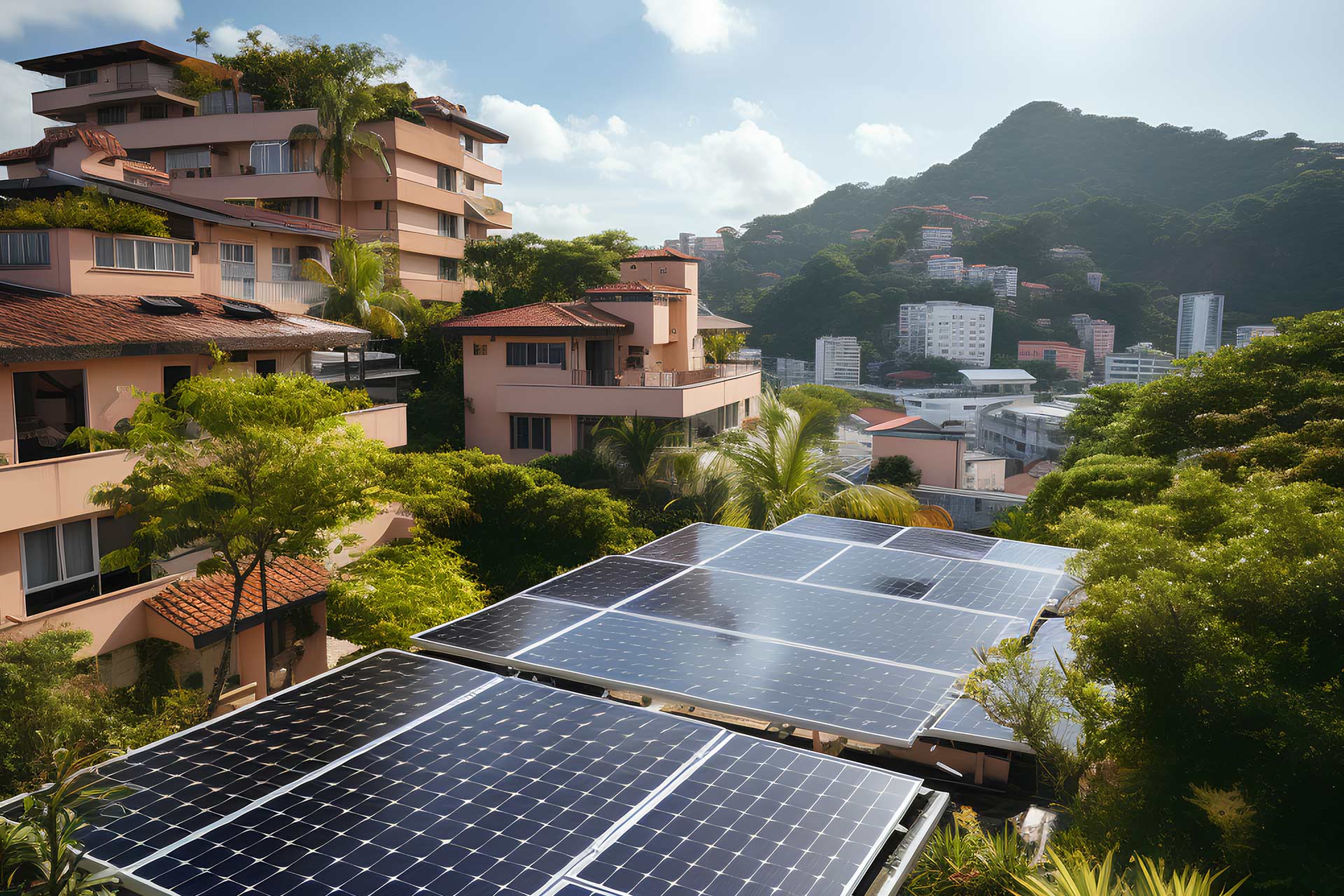Introduction:
In the dynamic world of solar energy systems, two prominent players have emerged to convert sunlight into usable electricity efficiently: string inverters and micro inverters. These two technologies play a crucial role in converting the direct current (DC) generated by solar panels into alternating current (AC) for household use. Both string inverters and micro inverters have their own set of advantages and considerations, making the choice between them an important decision for anyone looking to invest in a solar power system.
String Inverter: Harnessing Power in Unity
A string inverter, also known as a central inverter, is a common and traditional choice for solar installations. It operates by connecting multiple solar panels in series (or strings) and then channeling the combined DC power into a single inverter unit. This central inverter then converts the combined DC power into AC power for consumption or grid connection. Here are some key characteristics and benefits of string inverters:
- Cost-Effectiveness: String inverters are generally more cost-effective when compared to micro inverters. They involve fewer components, which results in lower initial installation costs.
- Simplicity: Having a single central inverter makes maintenance and troubleshooting relatively straightforward. This design is also less complex to install.
- Efficiency: While string inverters are efficient for larger installations with uniform shading and panel orientations, their efficiency can be impacted if even a single panel experiences shading or underperformance.
- Scalability: String inverters are well-suited for larger solar arrays with a consistent setup, making them a popular choice for commercial installations and utility-scale projects.
Micro Inverter: Individual Empowerment
Micro inverters, on the other hand, take a different approach to solar energy conversion. Instead of connecting multiple panels to a single inverter, micro inverters are installed directly on each solar panel. This means that each panel has its own dedicated inverter unit. Here are the key aspects and benefits of micro inverters:
- Panel-Level Optimization: Micro inverters allow each solar panel to operate independently, maximizing energy production even in cases of shading, soiling, or panel mismatch. This can lead to higher overall system efficiency, especially in residential installations with diverse roof orientations.
- Safety: With micro inverters, the DC voltage is converted to AC voltage at the panel level, which can enhance safety during maintenance and reduce the risk of high-voltage DC arcs.
- Monitoring: Micro inverters often come with built-in monitoring systems that provide real-time data on the performance of each individual panel, enabling quicker detection and resolution of issues.
- Scalability: Micro inverters are well-suited for smaller residential installations where panel orientations and shading may vary. They can be easily expanded or upgraded by adding more panels with their accompanying inverters.
Choosing the Right Solution
The decision between string inverters and micro inverters depends on various factors, including the size of the installation, budget constraints, shading issues, and the desired level of control and monitoring. Large, uniform installations might benefit from the cost-effectiveness of string inverters, while residential systems with varying conditions may find micro inverters to be a better fit due to their panel-level optimization capabilities.
Ultimately, the choice between string and micro inverters is not one-size-fits-all. It’s crucial to work closely with solar energy professionals to assess your specific needs and goals. A careful evaluation of your installation site, energy consumption patterns, and budget will guide you toward the most suitable solution that maximizes energy production, efficiency, and return on investment. Whether you go for the simplicity of string inverters or the precision of micro inverters, both technologies contribute significantly to the growing adoption of solar power in a world striving for cleaner and more sustainable energy sources.



